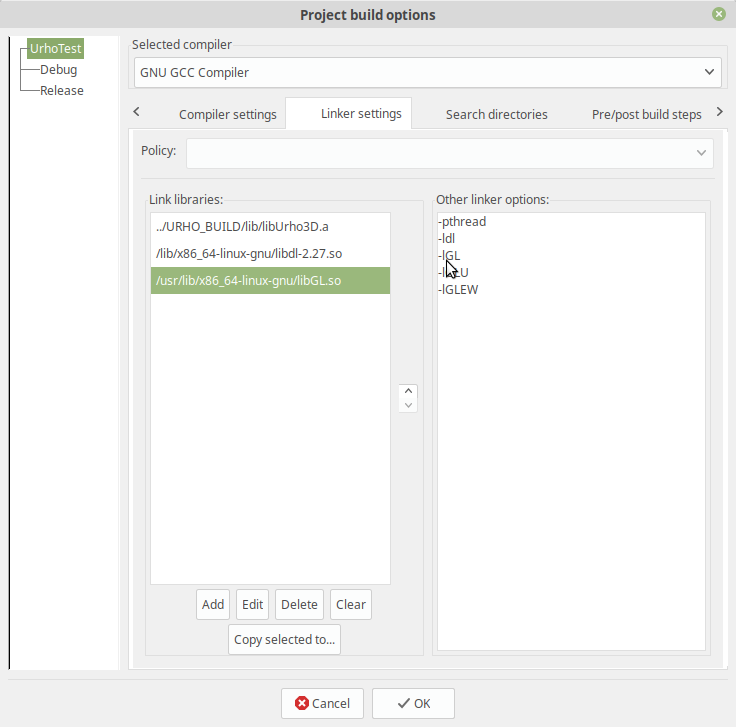hi,
i have a new project i want to try with urho3D but that do a while i didn’t used linux so i’m a bit lost, i forgot how i was compiling before.
i was able to compile urho3D successfully but i don’t remember how i was doing for a project.
if i’m not wrong i set the URHO3D_HOME environment variable in the .bashrc file and my project is well set.
-bin
—CoreData
—Data
-CMake
-cmake_generic.sh
-CMakeLists.txt
-main.cpp
my main.cpp is an old one just to get started but i think it should compile fine.
https://pastebin.com/5RzLD9jR
before i was using a little script with :
“./cmake_generic.sh /home/noals/Bureau/mf1_build -DCMAKE_BUILD_TYPE=Debug”
but i’m missing a step and i don’t remember which one ^^;
i know the first step is to tell the compiler all files to compile and then the second step is to compile but dunno, i’m a bit confused.
could you remind me how to compile my little project to get started please ?
while i’m at it, i have a few questions :
-is there a ide you would recommend to me ? before i was only compiling through the terminal but this project will be bigger i think so i will need an ide to see things clearly. is it hard to configure kdevelop ? i was interested in this one.
-i saw on the feature that there is knet with urho3D, my first step will be network programming and i know there is a tuto about that but is there a problem with knet if i want to compile my project for android later ?
i want to do a mmorpg but i won’t need realtime information kinda, i mean i will only use the network engine to communicate with my database (postgresql) and calculate algos like damage calculation when a player fight a mob or stuff like that. any advice for that too ?
(i know a bit about network programming, i started with java and socket programming actually using the knockknock protocole tutorial from oracle but java was just a pain at some point so i’m back with urdho3D ^^)
thx







